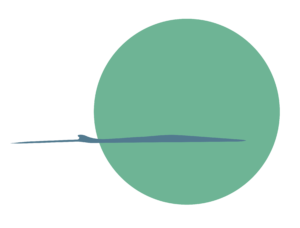The modern physical developments have required a mathematics that continually shifts its foundations.
Why Pure Physics
When I was a high school student, I was uncertain on what career to choose for my university, I just had inherited a deep love for Natural History from my childhood, but was scared by Mathematics. Then, I suddenly got surprised and charmed when the teacher explained the relationship between the motion of a bullet and the curve named “parabola”: thanks to Physics, Mathematics suddenly became the tool with which you can draw representations of Nature that not only portray real things quantitatively, but also do predict their evolution, drawing self-consistent cartoons living approximate lives of natural systems.
Then, at the University, professors and elder students were able to draw my attention to symmetry matters: when physical systems are represented “in a more symmetric way”, so that the mathematical entities used “speak by themselves”, fundamental properties and laws of emerge, in a way that sometimes proper writing predated the discovery of physical effects (e.g., General Relativity). There came love for “theoretical” Physics, here named “pure” Physics (PP).
My Vision
Formulating physical laws in terms of symmetry principles is an attitude with a long story: just as examples, let’s mention the Principle of Shortest Path of Light, the Principle of Stationary Action, the Hamiltonian formulation of Physics, Noether Theorem identifying symmetries and conservation laws. Algebrization of dynamics, namely the expression of fundamental laws through entities of differential geometrical or group algebraic nature, is the development of this line of research unifying the language of Classical and Quantum Physics. Algebrization reduces the evolution of any system to the “suitable bracket” of the state of the system, or any observable of it, with the “generator” of motion (the energy, in the Hamiltonian case, or the Free Energy functional, in the metriplectic case). It is a very powerful framework in which symmetries and conservation laws become strikingly clear.
I think that the algebrization of dynamics for any kind of system at very deep level (possibly, at quantum level) could pave the way to understanding the deep meaning of entropy and the origin of dissipation and irreversibility: such topics are connected to the understanding of the interplay between energy and information in the operation of all kind of complex systems, and to that of evolving biological systems.
My Work
I work on the dynamics of dissipative systems, in particular on the development of algebraic formalism to represent it. The Hamiltonian framework is well based to describe all kind of “conservative” dynamics; “dissipative” systems are being algebrized as a result of a rather recent effort, dating not earlier than the mid of XX Century. Most of all, I study that extension of Poisson bracket formalism named metriplectic formalism, that should be able to encode dissipative dynamics. Almost all of my work is about Complete Metriplectic Systems (CMS), in which energy conservation and entropy production are enforced.
Also, as a development of my work in Space Weather and Space Physics [LINK], I have been working, and still work, on stochastic dynamics, mainly applied to turbulence.
My interests, and work, in PP are then:
- Metriplectic formulation of dynamical systems;
- Quantization of metriplectic systems and relationship between quantum and classical dissipative systems;
- Stochastic systems treated via path integral approach.
What’s Next
These are some of my future research lines in Pure Physics:
- Lyapunov functional and entropy functionals;
- Metriplectic vs GENERIC vs open quantum systems vs non-unitary quantum systems;
- From microscopic dynamics to stochastic mesoscopic dynamics to metriplectic macroscopic dynamics;
- Applications of all the above…
